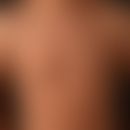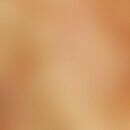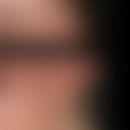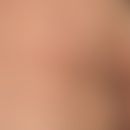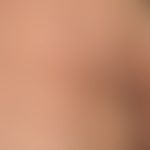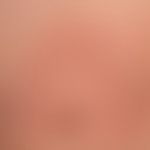Synonym(s)
DefinitionThis section has been translated automatically.
Rare, androtropic, inflammatory, eminently chronic disease of the skin of unknown etiology. Large parapsoriasis en plaques, is considered to be the pre-mycoside phase (in situ stage) of Mycosis fungoides.
Occurrence/EpidemiologyThis section has been translated automatically.
m:w=3:1
You might also be interested in
ManifestationThis section has been translated automatically.
Start in middle age (40-50 years).
LocalizationThis section has been translated automatically.
trunk; gluteal region, thighs, upper arms.
Clinical featuresThis section has been translated automatically.
Few (on average up to 6), more rarely also many (see fig.) inflammatory, not or only slightly elevated, larger (mostly >10 cm in diameter), round or oval, sometimes also by confluence bizarrely configured, sharply defined, pityriasiform reed, red, red-brown, also brown-yellow, sometimes moderately itching, sometimes symptomless patches or plaques, whose longitudinal axes are often aligned according to the cleavage lines. More rarely are ichthyosiform or "deck-chair-like", getigered aspects.
HistologyThis section has been translated automatically.
General therapyThis section has been translated automatically.
External therapyThis section has been translated automatically.
- Careful phototherapy cycles with UV rays, especially UVB, and possibly also UVA1, should be observed during therapy breaks. Alternatively outpatient balneo-phototherapy with UVB or PUVA therapy (as systemic PUVA therapy or as PUVA bath therapy).
- Dermatological climate therapy (maritime climate), which generally leads to a significant improvement.
- Nursing external measures. Oily O/W lotions or saline or urea-containing creams and ointments(e.g. basodexan, nubral, calmuride).
- In case of distinct itching creams or lotions containing glucocorticoids. Sparing use of cleaning agents such as syndets or soaps. Instead, use hydrophilic body oils as washing substitutes (e.g. ready-to-use preparations that are generally used as oil baths such as oil bath cordes, Balneum Hermal oil bath, Linola fat oil bath).
Progression/forecastThis section has been translated automatically.
LiteratureThis section has been translated automatically.
- Arai R et al (2012) Retrospective study of 24 patients with large or small plaque parapsoriasis treated with ultraviolet B therapy. J Dermatol 39:674-676
- Bordignon M et al (2009) The role of immunohistochemical analysis in the diagnosis of parapsoriasis. Acta Histochem 113:92-95
- Inaoki M et al (2010) Large plaque parapsoriasis with the "deck-chair" sign successfully treated with bath psoralen and ultraviolet A therapy. J Dermatol 37:570-572
- Kreuter A et al (2008) High association of human herpesvirus 8 in large-plaque parapsoriasis and mycosis fungoides. Arch Dermatol 144:1011-1016
- Nag F et al (2013) Ichthyosiform large plaque parapsoriasis: report of a rare entity. Indian J Dermatol 58:385-387
Incoming links (6)
Atrophodermia idiopathica et progressiva; Erythema; Large parapsoriasis en plaques; Mycosis fungoides patch stage; Parapsoriasis en plaques large-hearth-poicilodermatic; Parapsoriasis (overview);Outgoing links (12)
Climatotherapy; Cream; Glucocorticosteroids; Lotion; Mycosis fungoides; Parapsoriasis en plaques (overview); Pauterian microabscesses; Pruritus; Puva bath therapy; Puva therapy; ... Show allDisclaimer
Please ask your physician for a reliable diagnosis. This website is only meant as a reference.
